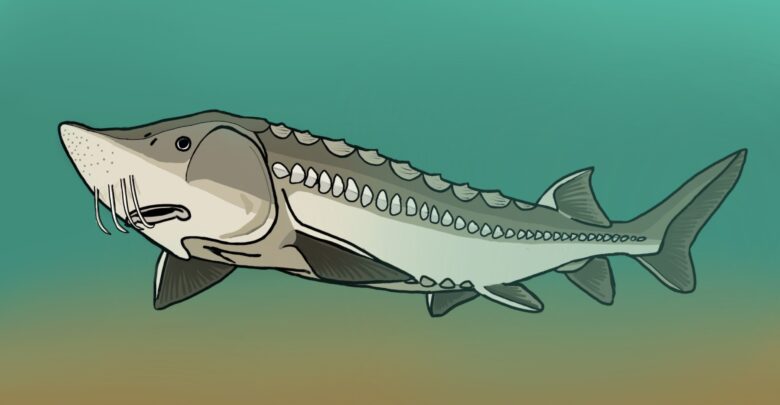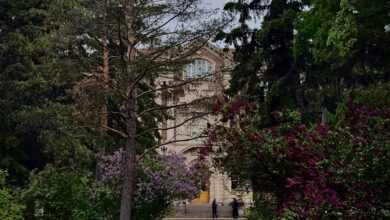 Luke Nelson
Luke NelsonOn the banks of the North Saskatchewan River in Capilano Park, a group of hikers came across what would later be confirmed as the 72-million-year-old fossil of an ancient sturgeon.
Luke Nelson is a biological sciences graduate student in the lab of Alison Murray, a University of Alberta professor of biological sciences, that focuses on fish fossils. Nelson explained that due to the fossil’s unique patterning, the hikers suspected that it wasn’t a common-place boulder. Excited about the find, Nelson said they brought the fossil to the U of A.
According to Nelson, there are a few reasons why this find is significant. The sturgeon fossil is one of the first fish fossils found in Edmonton, Nelson said. Additionally, the sturgeon, named Boreiosturion labyrinthicus, is the first new species of fish named in Edmonton.
“It’s the first sturgeon that has been found in this part of Alberta from around this time. So, we don’t actually have any other fossils of sturgeons whatsoever from central Alberta, near where Edmonton is.”
Fossil sturgeon named for the markings on its skull, Nelson says
According to Nelson, the sturgeon’s unique patterning led the researchers to realize they had discovered a new species. He said there are three skull patterns that distinguish this sturgeon from other living and fossil sturgeons.
Nelson explained the meaning behind the chosen name, B. labyrinthicus. Boreio means northern, sturion means sturgeon, and labyrinthicus refers to the skull’s markings.
“The labyrinthicus part of the name actually refers to the maze-like markings on the skull bones of the sturgeon. So when I saw those, I immediately thought, this is like a maze. I think that would be kind of a cool name.”
To figure out the age of the sturgeon, the researchers looked at the rocks it was found in. They compared the rocks to similar ones in Drumheller.
“We can [compare] the coal layers to come up with a date. We know that there’s this one seam of coal that’s here in Edmonton, and then there’s also a seam of coal from Drumheller. And we know the date of that to be around 72 million years old.”
Nelson also explained what elements of the sturgeon’s body were fossilized. This includes the skull roof, some of the sides of the skull, the collar bones, some of the fin, and two scoots. Scoots are spiky scales that run down a sturgeon’s back and sides.
It’s unknown why sturgeon have survived for so long, Nelson says
Overall, Nelson said modern sturgeon are similar to their fossil counterparts. He added that they estimate the fossil sturgeon was two metres long.
“They’re really big, they’re really cool, but they’ve also remained pretty successful for a very long time with a simpler type of body.”
There are fossils of sturgeons that lived 174 million years ago, during the Middle Jurassic. Although sturgeons have successfully lasted a substantial amount of time, Nelson said they can’t say for certain why this is the case. Notably, sturgeon survived the mass extinction of the dinosaurs at the end of the Cretaceous Period, 65 million years ago, Nelson said. He added that several freshwater organisms, like crocodiles, also survived.
“One general conclusion is that a lot of fresh water animals were able to survive that [mass extinction]. We actually don’t entirely know why,” Nelson said. “Sturgeons often did live in freshwater, and they still do today as well. That might give them some some sort of advantage.”
“There may be the rest of the skeleton sitting somewhere, although finding it is likely impossible,” Nelson says
According to Nelson, it’s not uncommon for members of the general public to come across fossils. However, he thinks this find is particularly interesting due to the location.
“Some of our greatest fossils from Alberta, in general, can occasionally be stumbled upon by just general members of the population,” Nelson said. “This one in particular I think is really cool because it did happen right in the city.”
Nelson explained that valleys like Edmonton’s North Saskatchewan River Valley are a good way to find fossils. Over time, the river erodes away rock and fossils become exposed.
“This likely would have been a boulder that rolled down from a cliff face. There may be the rest of the skeleton sitting somewhere, although finding it is likely impossible.”




